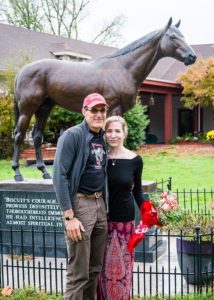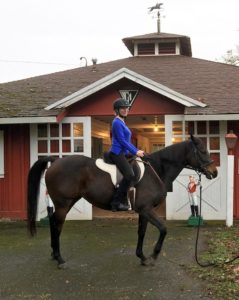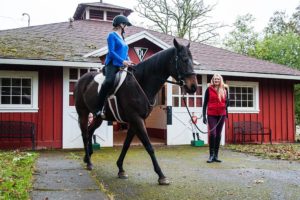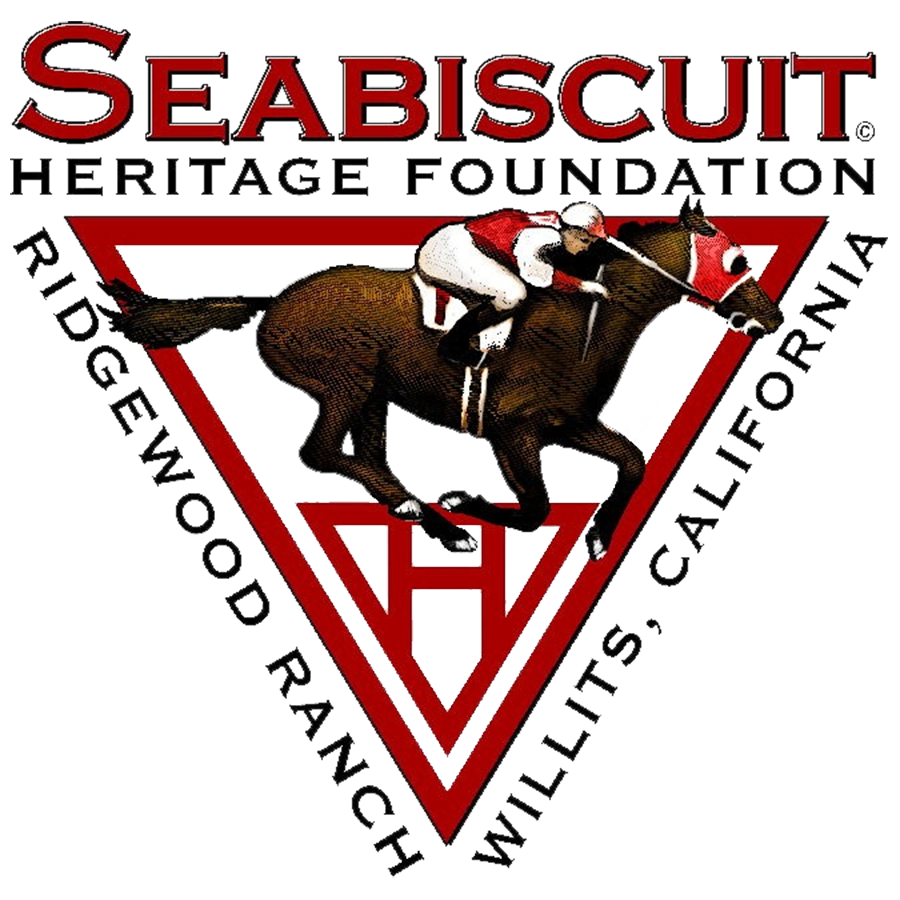Laura Hillenbrand Comes Home to Seabiscuit’s Ridgewood Ranch
One day years ago, as I sat in a tiny, sweltering apartment in Washington, DC, put my pen to paper, and began to write Seabiscuit: An American Legend, a dream crackled to life in me. Someday, I hoped, I would walk the hills at Ridgewood.
Over the five years that I spent living in the history of Seabiscuit’s life, Ridgewood, the beloved ranch of the horse’s owners, Charles and Marcela Howard, became so real to me that it was as if I had breathed the air there myself. I read thousands of newspaper articles that referenced the place and the history that unfolded there; pored over innumerable photographs of the land, the house, the barns, the sky kissing the jagged California horizon; listened to old voices tell me of the place and the people and horses that trod its grasses; held in my hands the books, letters, scrap books, and appurtenances of the lives that had once graced the place. I longed to go there as one longs to go home, but I was seriously ill and could not travel. I believed this longing would always dwell in me unanswered.
All these years later, a beautiful thing happened. My body revived, and as the young Charles Howard had done at the dawn of the twentieth century, I followed my heart west. Last fall, my heart carried me to my dream place. It carried me to Ridgewood.
My boyfriend David and I were welcomed by Col. Michael C. Howard (Ret., USMC), great-grandson of Charles and Marcela; Seabiscuit Heritage Foundation (SHF) President Jacqueline Cooper; SHF Chairman Tracey Livingston; and a host of other family and friends, bearing flowers, hugs, beaming smiles, and eyes that shone like mine.

Ridgewood was as grand and lovely as I had dreamt. We were treated to an exquisite luncheon in the great room of what was once Charles and Marcela’s ranch house. I gazed about myself in wonder, thinking of all that my subjects shared in this place – the shattering loss of a little boy, the bliss of new love, the triumphs and pressures and heartbreaks of Seabiscuit’s career, the year of recuperation of wounded jockey and horse, the return to the pinnacle of racing, Charles and Seabiscuit wandering the hills together in retirement, and each coming to his peaceful end of life only a few yards, and a few years, apart.
We ate handsomely, exchanged heartfelt gifts, and told captivating stories. I could almost feel the Howards, jockeys Red Pollard and George Woolf, and old trainer Tom Smith in the room with us, their laughter echoing alongside ours. We gathered on the lawn in front of the house, where a Tex Wheeler life-sized statue of Seabiscuit stands. I stood back and gazed upon the monument, so breathtakingly accurate and realistic that I felt as if I was in the great horse’s presence. I wanted to reach up and stroke his neck.
As we walked the grounds together, Col. Mike spoke of the history in each place we passed. I looked over the trees and hills, thinking of Charles and his Biscuit ambling among them together, stealing some peace in this resplendent land. My mind crowding with thoughts of how Seabiscuit had lifted our despondent nation in the Depression, and had lifted me in my years of sickness, I was so moved I found myself crying. I asked my hosts to step away for a few moments, and knelt down.
On the ground before me I placed little offerings: two dimes and a penny, the same sum that was in Charles Howard’s pocket when he first arrived in the west; a shoe that Seabiscuit had worn in defeating War Admiral in their fabled match race at Pimlico in 1938; and a peppermint, a treat almost universally loved by horses. As a soft rain fell on my head, I lay my hands on the good Ridgewood earth and whispered my gratitude to the Howards, to Red Pollard and fellow jockey George Woolf, to Tom Smith, and most of all, to sweet Seabiscuit. I picked up the shoe, left the coins and mint for the Howards and their horse, wiped away my tears, and rose.

There was one more place I had to go. Not far from the ranch house stands the stud barn where Seabiscuit lived and died. Now on the National Register of Historic Places, it has been restored to pristine perfection, painted in the crimson and white of Howard silks. I changed into riding clothes and Col. Howard led me in. There was Seabiscuit’s stall, clean and neatly bedded as if it awaited his return. I could almost hear him stirring in the straw, nickering for his dinner. I ran my fingers over the doorframe and leaned in to see the walls he rested against, the vistas he viewed from its window. I sat leaning against the stall and spoke to Col. Howard of his inexhaustible kindness to me, both as I researched his forebears and in the years since, in which we’d become family to each other. I owe him more, I told him, than I can ever repay.
From outside came the ring of hooves, and there was Jacqueline, leading her lovely mare Bronze Sea, a direct descendent of Seabiscuit. I was so struck by how much she looked like the Biscuit, with her kind face and wide-set, intelligent eyes. Col. Howard gave me a leg up, and there I was, astride a horse who bore Seabiscuit’s blood, in front of the place he called home. I was overwhelmed. At one point we stopped, and Jacqueline, the horse, and I all stared in the barn at Seabiscuit’s stall. It was a moment that will warm my memory always.

Soon after, with many hugs and words of gratitude, we left Ridgewood. The brown of the ranch soil, and the dust from Bronze Sea’s neck, were still on my fingers as we drove away.
At long last, I had come home.
– Laura Hillenbrand


